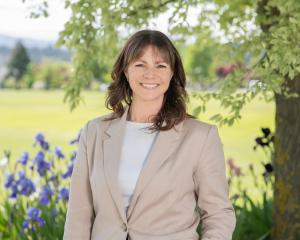
More than 40 people attending an "Ignite Wanaka" meeting last week were told of the plans to develop the site by Christchurch International Airport Ltd (CIAL).
The company is studying the feasibility of creating a new airport in Central Otago but is already planning New Zealand’s largest solar farm of 220ha (expandable to 400ha) at Kowhai Park, which is behind the runways at its existing airport in Christchurch.
When Kowhai Park is at 220ha, it will be big enough to generate 150MW of electricity for its airport campus (about enough to power 30,000 average residential homes).
CIAL executives said there was "no reason" why a similar solar farm could not be built in Central Otago, where it owns 750ha of land.
Project planning and sustainability lead Rhys Boswell told Ignite Wanaka Chamber of Commerce members on Thursday a benefit of the Tarras land was it was "beside Transpower’s main transmission network."
Mr Boswell added CIAL was already exploring and developing solar energy "and there is no reason why that could not be done in Central Otago".
Mr Boswell and Central Otago airport project lead Michael Singleton were invited to present their thinking about the controversial Tarras airport project.
CIAL has not begun a formal consultation process and last held a public meeting in Tarras in April 2021. That is a sensitive point with many Upper Clutha residents who are critical of the proposal and demanding more information and input.

The project team was assessing runway options and engaging with various stakeholders. A master plan would be drafted once the runway project was completed, Mr Singleton said.
Tarras was chosen because it was a "blank sheet" but CIAL did not yet know if it had aeronautical capabilities.
"We have a long way to go and a lot of gateways to get through. It will be pretty modest. I think people have this fear we will be dumping Heathrow in there. We are not," Mr Singleton said.
Mr Boswell said the aviation industry was developing the first generation of electric, hydrogen and other bio-engineered fuel options.
New Zealanders could expect to see the new technology being used within 10 years. If Air New Zealand converted its turboprop aircraft fleet right now to electric, domestic electricity demand would increase 10%.
Mr Singleton said future airports needed a resilient supply of renewable energy.
CIAL wants to do things that enabled aviation to decarbonise at the fastest possible rate. Enabling renewable energy was also a key priority.












